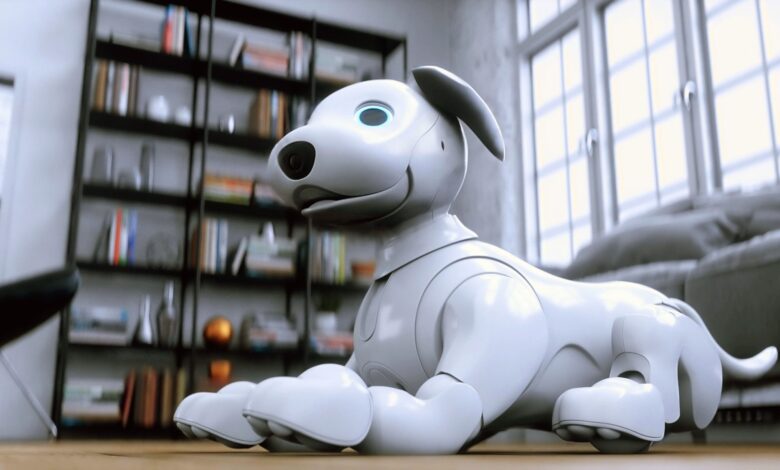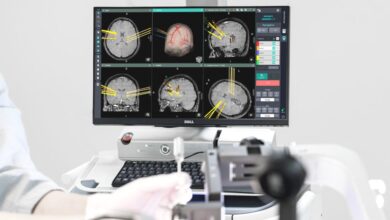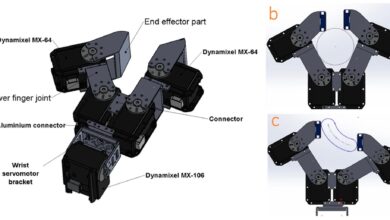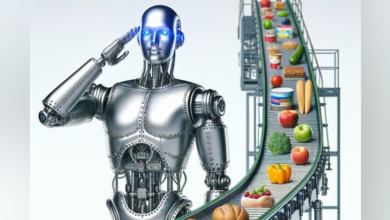Robots cannot outrun animals, but they’re evolving faster • Earth.com

Robotics engineers have worked for decades, using substantial funding, to create robots that can walk or run with the ease of animals.
Despite these efforts, today’s robots still cannot match the natural abilities of many animals in terms of endurance, agility, and robustness.
Amazing movement of animals
“A wildebeest can migrate for thousands of kilometers over rough terrain, a mountain goat can climb up a literal cliff, finding footholds that don’t even seem to be there, and cockroaches can lose a leg and not slow down,” said study senior author Max Donelan from Simon Fraser University‘s Department of Biomedical Physiology and Kinesiology. “We have no robots capable of anything like this endurance, agility, and robustness.”
Seeking to understand and quantify this disparity, an interdisciplinary team of scientists and engineers from top research institutions conducted a comprehensive study to compare various aspects of robotic systems designed for running with their biological counterparts.
Animal versus machine
Surprisingly, the researchers found that biological components generally underperformed compared to engineered parts on specific metrics. However, where animals significantly outshine robots is in the seamless integration and control of these components.
The study was a collaborative effort involving Sam Burden from the University of Washington, Tom Libby from SRI International, Kaushik Jayaram from the University of Colorado Boulder, and Simon Sponberg from the Georgia Institute of Technology.
Each researcher focused on different “subsystems” critical to running robots – Power, Frame, Actuation, Sensing, and Control – and assessed them against their natural equivalents.
Robots are still no match for animals
Contrary to prior assumptions that biological superiority explained animals’ edge over robots, the findings revealed that, with few exceptions, the engineered subsystems frequently outperformed their biological counterparts.
“The way things turned out is that, with only minor exceptions, the engineering subsystems outperform the biological equivalents – and sometimes radically outperformed them,” Libby said.
“But also what’s very, very clear is that, if you compare animals to robots at the whole system level, in terms of movement, animals are amazing. And robots have yet to catch up.”
Robots evolve faster than animals
The research team remains optimistic about the future of robotics, noting the rapid progress made in a relatively short time compared to the millions of years over which animals have evolved.
Dr. Burden highlights the advantage of directed design in robotics over natural evolution: “It will move faster, because evolution is undirected,” he says. “Whereas we can very much correct how we design robots and learn something in one robot and download it into every other robot, biology doesn’t have that option.”
“So there are ways that we can move much more quickly when we engineer robots than we can through evolution – but evolution has a massive head start.”
Potential applications for running robots
The potential applications for efficient running robots are vast, ranging from solving “last mile” delivery challenges to performing tasks in hazardous environments.
Looking forward, the researchers aim to focus not merely on developing better hardware but on improving how existing hardware is integrated and controlled.
“As engineering learns integration principles from biology, running robots will become as efficient, agile, and robust as their biological counterparts,” Donelan concluded.
Animals that have inspired robots
Many animals have inspired the design and function of robots, thanks to their unique abilities and adaptations. Here are a few notable examples:
Insects
Swarm robots are small robots that collaborate in large numbers to accomplish tasks, much like how insects work together in colonies.
Spiders
The movements and mechanics of spiders have inspired the creation of multi-legged robots, which are useful in navigating rough terrain or in performing complex, coordinated tasks.
Snakes
Snake robots can maneuver through tightly confined spaces and are used in rescue operations, medical procedures, and inspection tasks in complex environments like collapsed buildings or inside machinery.
Geckos
Robots that mimic the ability of geckos to climb smooth surfaces have been developed using synthetic adhesives that replicate gecko footpads.
Birds
The flight of birds has influenced the design of aerial robots or drones, which mimic the flapping and soaring of wings to improve maneuverability and energy efficiency.
Fish
Robotic fish are designed to swim efficiently through water, used for underwater exploration, surveillance, and studying aquatic life without disturbing natural habitats.
Dogs
Quadruped robots, such as Boston Dynamics’ Spot, mimic the movement of animals like dogs and are used for tasks ranging from industrial inspection to search and rescue operations.
Cheetahs
The high-speed running of cheetahs has inspired the development of robots that can move quickly over land, potentially for military use or emergency response.
The study is published in the journal Science Robotics.
—–
Like what you read? Subscribe to our newsletter for engaging articles, exclusive content, and the latest updates.
Check us out on EarthSnap, a free app brought to you by Eric Ralls and Earth.com.
—–



